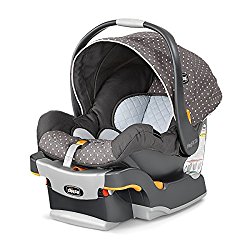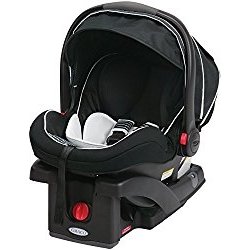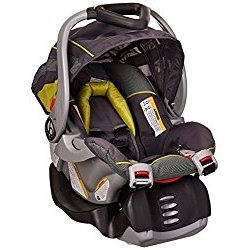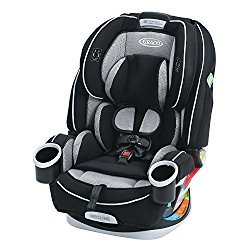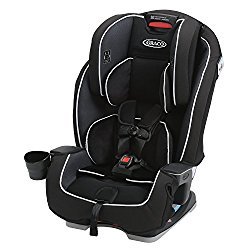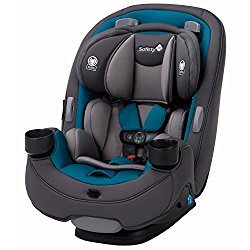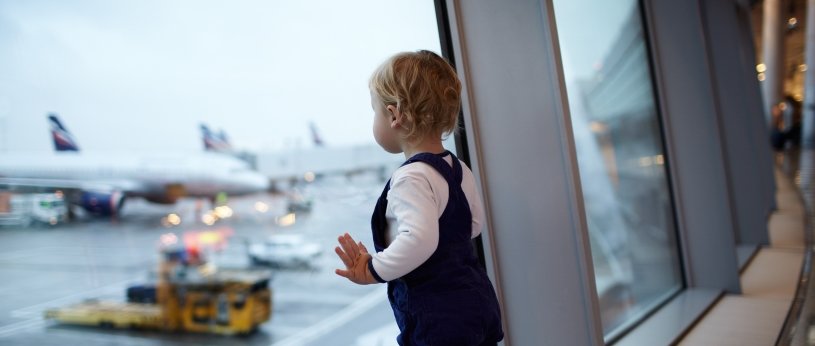
Flying can be hard enough without a baby and a car seat. If you’re getting ready to book plane tickets this travel season but have never flown with a baby or toddler who still needs a harnessed car seat, you may be inclined to drive instead of fly.
You’ve already got some suitcases, a diaper bag, a purse and maybe even a laptop or tablet. Now you will also be carrying a car seat around the airport. Plus, it may not fit in the airplane seat and you may have never installed one on an airplane.
It sounds like a lot, but you can stop worrying. With some preparation and planning it can be a fun adventure to fly with your baby or toddler. In a lot of ways it is even easier to fly with a baby than without one!
Let’s take a look at some key things to think about. Parents have a lot of questions about car seats on planes. Here are some answers.
FAQ #1: What FAA-approved car seats are the best to use?
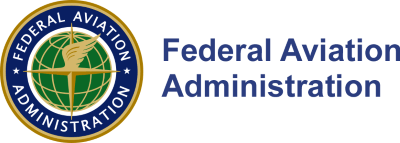
Fortunately, many car seats on the market, except backless boosters, are approved for airplane travel. To be sure, look for the FAA-approved sticker on the car seat and in the instruction manual. These are the ones we recommend most.
TOP-3 FAA Approved Infant Car Seats:
TOP-3 FAA Approved Convertible (All-in-One) Car Seats:
An alternative to flying with a car seat is a portable travel harness. These are designed specifically for airplane use and approved by the FAA. They are a big space saver when traveling.
FAA Approved Child Airplane Travel Harness

(1+ years; weighing 22 to 44 pounds; up to 40 inch tall): CARES (Check Price on Amazon)
The Child Aviation Restraint System, or CARES is a portable travel harness specifically for airplane use. Some frequent flyers swear by it and if your child is the right size you should consider it.
If possible, avoid borrowing or renting car seats. They may be worn or outdated, and since you’re not used to them there’s a greater risk of improper installation.
FAQ #2: Does my child really need a car seat on a plane?
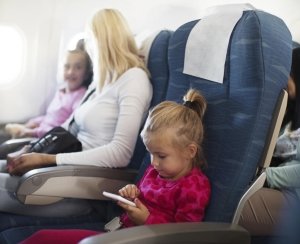
The short answer is no. The FAA does not require children under the age of 2 to be in a child restraint. They may be held on your lap instead, usually free of charge. However, the American Academy of Pediatrics warns parents that it’s much safer to use an FAA-approved car seat instead.
Turbulence, while often not a major concern, can be extreme and does cause injuries in some cases. In those occurrences, your child can easily fly out of your lap. In a survivable crash, they could be slammed against you or flung out of your arms.
While car seats are the safest way to go in flight, you will have to buy an extra ticket for the little one since they’ll need their own airplane seat. Many airlines such as Southwest and Hawaiian Airlines now offer cheaper “infant fares” which won’t hurt your budget as much.
Note: US airlines are required to allow child restraint use for children under 2, but the same doesn’t apply to all international airlines. Check our airline info below or call the airline directly to find more info.
It does seem strange that the law mandates everything in the cabin be secured during taxi, take-off and landing – except for lap children under 2. FAA studies unsurprisingly found that if families were forced to buy an extra ticket for a baby they would be more likely to drive instead. Statistically, driving is much more dangerous than flying.
FAQ #3: How can I tell if the car seat will fit on the plane seat?
Even if FAA-approved, there’s no guarantee that your seat will fit on a specific plane. Check your seat’s dimensions and compare them against those of the airplane seat. Since you should do this before you fly, you’ll have to try to find this info without measuring the plane seat.
Check our airline info below or use websites such as seatguru.com for the best estimates of seat dimensions. Car seat widths typically vary anywhere from 17 – 21 inches as do the widths of plane seats, so research is key to make sure you’re not left with a useless car seat on the plane. Beware the budget airlines as their seats can often measure under 16 inches.
FAQ #4: How do I install our car seat on a plane?
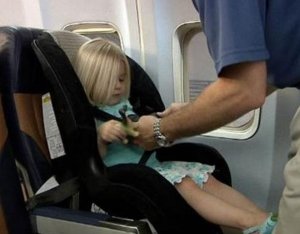
Rear-facing seats will install exactly as you do in your car. Slip the lap belt through the belt guides in the seat, latch, and tighten.
The car seat will impact how much room the passenger sitting a row in front of your baby can recline. Consider trying to seat another family member in that row or tell the passenger that your baby sleeps a lot better like that and won’t kick the back of the seat. Most people are quite understanding.
Forward-facing seats take a little more effort. Incorrect installation could require intervention from a flight attendant who may have to detach the whole seat belt. Avoid that hassle with these steps:
- Recline the back of the airplane seat.
- Insert the seat belt through the car seat’s belt path. Be sure the buckle flap is facing the seat back when you buckle it so you will be able to release it when you land.
- Tighten the strap and return the seat back to its upright position.
Note: To avoid blocking exit access, you must install in the car seat in a window seat or middle seat of a middle row and not in an exit row.
FAQ #5: What happens if my car seat doesn’t actually fit in the plane seat?
The FAA requires the airline to find an appropriately sized seat in the same service class. You may have to be separated from other family if this happens, or other passengers may have to move from their seats.
To avoid those hassles, make sure you’ve researched seat sizes and have brought a car seat that’s as compact as possible for air travel. The worst case scenario is that you’ll have to gate check the car seat and hold the baby on your lap. Most airlines are very accommodating.
FAQ #6: What if the flight attendant tells me that the car seat isn’t allowed or instructs me to install it incorrectly?
Flight attendants make mistakes just like everyone else. They may tell you to put your rear-facing seat forward, for example, which is incorrect.
The best solution for any misunderstanding is to be prepared with the facts. Print out the FAA rules that apply to car seats or have it saved on your phone. Also bring proof that your seat is FAA-approved.
Being polite but firm is the key in these situations. If you still get pushback, ask for another flight attendant to confirm or ask the attendant to consult his or her own flight manual.
If this still doesn’t work, don’t lose your temper or you’ll risk getting removed from the plane for not following crew instructions. After the flight, be sure to contact the airline or other customer advocate so that the crewmember can be educated or disciplined, depending on the airline policies.
FAQ #7: Can my child sit in a booster seat on the plane?
It depends on the type of booster. Backless boosters are not approved since they require a shoulder belt and airplane seats have only a lap belt. High back boosters with harnesses that are labeled FAA-approved are usually allowed depending on the airline.
However, boosters with backs are pretty bulky and hard to move around. Since most children who are old enough to ride in boosters can sit in their own plane seat without a child restraint, you probably won’t need to use it. If you’ll be using a rental car at your destination and would like to use your booster seat in the car, just check it along with your other baggage.
FAQ #8: Are there child restraints other than a car seat we can use on a plane?
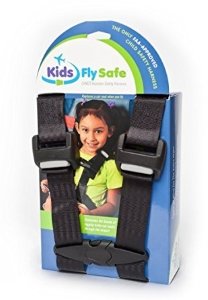
Yes! The Child Aviation Restraint System, or CARES is a portable harness system suitable for kids at least 12 months old who weigh 22 – 44 pounds. It’s actually the only FAA-approved alternate child restraint and is great for frequent-flying families.
At only 1 pound, it comes in a 6-inch bag which can easily be stowed in your carry-on bags. It’s made of seat-belt material and works like a 5-point car seat harness.
To install:
- Lower the tray table of the seat behind your child.
- Loop the harness over the seat back.
- Adjust the loop height to be at or slightly above the child’s shoulders.
- Tighten and return tray table to upright position.
- Fasten in your child, adjusting the shoulder straps and tightening as you would in a harnessed car seat.
- Loop the airplane lap belt through the harness and buckle.
While the CARES is a good alternative for lugging around a car seat, it might not be that comfortable for a child who’s at or near the minimum age for use (12 months). At this age, they’re used to being more reclined in a car seat, so napping can be difficult because they’ll tend to slouch.
There’s also no strap between the legs as you’d have in a car seat, so wiggling little ones might keep sliding down the seat. Be prepared to adjust the seating position often, tighten up the shoulder straps, or wedge a pillow between him and the arm rest.
FAQ #9: What if I’m traveling alone with my baby and can’t carry a car seat around the airport?
If your car seat is part of a travel system with a light stroller, that should help. Otherwise, there are rolling car seat carriers specifically designed for use in airports. Toddler car seats can quickly convert into strollers with convenient travel wheels. You’ll probably need to check it at the door of the plane, however, so be prepared to ask for help with carrying your car seat to your plane seat.
FAQ #10: What are other ways to make flying more comfortable and enjoyable for my child?

Child restraints are only part of the puzzle when it comes to air travel. Babies and toddlers can get fussy, especially on long flights. To save your and your fellow passengers’ sanity, here are some tips:
- When choosing your flight, look for flights that aren’t that full by examining the seating chart online. While you can’t be sure of how full it’s going to be at flight time, you’ll be more likely to find a good spot for your child’s car seat.
- Book your flight for nap or bedtime. Your child may sleep quietly through the entire flight if you’re lucky.
- Try to reserve a full row to yourselves, or at least an aisle and window seat if you don’t have assigned seats. Passengers aren’t likely to choose the middle seat between you, so you’ll have more privacy.
- Arrive early and speak with your flight attendant to get the best seating options.
- Bring a birth certificate/proof of age for your child if they are under 2 years of age.
- Bring extra diapers, a change of clothes, water, & snacks.
- Bring toys, books, & other things that aren’t noisy to keep them busy.
- Dress your child in layers – planes can be hot or cold depending on time of year and number of passengers.
- Wear a nursing shirt. If your child is still nursing, it will make it much easier to discreetly feed the baby during the flight. Plus, it helps with air pressure changes that can hurt their ears.
- Bring a pillow for comfy nursing. If your child is in a CARES harness or unbuckled during a long flight, it’ll be great for napping too.
With some good planning and research, you’ll find the perfect car seat for your flight and will be prepared for a fun and relaxing plane trip with your baby.
Airline Car Seat Policy: Rules and regulations for major USA air carriers.
Each airline has different policies when it comes to car seats, holding infants on your lap, and boarding with baby related baggage. A breakdown of the car seat rules for some of the most popular airlines is listed below. This page is updated frequently but you may still want to call ahead as airlines can change their policy.
Common FAA & TSA Travel Rules for USA
- Children under 2 can sit on an adult’s lap.
- Children 2 and older must have a ticket.
- One adult can hold only one infant. If you are travelling alone with two infants, you must buy one seat.
- Two adults with two children on their laps sometimes cannot sit in the same row due to the number of oxygen masks available.
- Families with children under 2 can ask to board early at the gate.
- Unticketed children do not have a baggage allowance.
- Window seats are preferred for car seat use.
- Car seats are not allowed in emergency exit rows, bulkhead seats, or the rows on either side of an exit row.
- If you’re travelling with an infant less than 7 days old, your pediatrician must fill out a passenger medical form.
- Check the official Transportation Security Administration TSA car seat policy.
United Airlines
- Children under 2 can sit on an adult’s lap.
- You must buy a ticket for your child if you plan to use a government-approved car seat. If there is room after everyone boards, you can use an adjacent unused seat, if not, the seat must be stowed in a storage space.
- AmSafe’s CARES may be used and must have an FAA label attached.
- No other booster seats, restraint harnesses or vests are allowed.
- One stroller & one car seat allowed to be checked for each child for free.
- Diaper bag, breast pump & milk, child car seat, and compact folding stroller are allowed to be carried on board plane, other strollers must be checked at departure gate.
- Many airport ticket counters will provide a free protective bag for your car seat or stroller, but quantities are limited. It’s best to call ahead to check availability.
- Check the official United Airlines car seat policy.
Delta Airlines
- Children under 2 are allowed to sit on an adult’s lap. One adult can hold only one infant. If you are travelling alone with two infants, you must buy one seat.
- Strollers and car seats can be checked for free.
- Booster seats are not allowed to be used on the plane, but they can be brought on the plane as an additional free item along with a bassinet.
- Onboard bassinets are available for babies up to 20lbs and 26 inches, but they must be reserved before the flight.
- Check the official Delta Airlines car seat policy.
American Airlines
- You must have a ticketed seat for your child to use a car seat. If the seat next to you is free, you may use that. If not, your car seat must be stored.
- One stroller and one car seat can be checked for free for each ticketed customer.
- One carry-on diaper bag allowed per child.
- Bassinets are available on a first come, first serve basis at the gate for babies under the age of 2 and fewer than 20 pounds. They are only available on 767-300, 777-200, 777-300, and 787 aircrafts.
- No children under 5 can travel alone.
- Check the official American Airlines car seat policy.
Southwest Airlines
- One child between the age of 14 days and 2 years old can sit on an adult’s lap free of charge.
- You must have a ticket for any child using a car seat onboard.
- Backless booster seats and any device that ties a child to another person are not allowed.
- Children ages 2-11 pay a discounted airfare.
- The seat width on all Southwest Airlines aircraft is approximately 17 inches.
- Check the official Southwest Airlines car seat policy.
Alaska Airlines
- Infants are allowed on laps in certain areas of the plane due to the location of extra oxygen masks.
- Car seats & strollers are free checked baggage.
- Diaper bags count towards your carry-on limit.
- The seat width on all Alaska Airlines aircraft is approximately 17 inches.
- Check the official Alaska Airlines car seat policy.
Hawaiian Airlines
- Children under 2 may sit on an adult’s lap.
- Children ages 2-11 pay a discounted airfare.
- Bassinets are available upon request for specific flights.
- CARES restraint system is allowed.
- No backless booster seats, safety belts, belly belts, or other harnesses are allowed during taxi, takeoff, and landing.
- Diaper bags count towards your carry-on limit.
- The smallest seats on the Hawaiian Air planes are 16.8 inches wide.
- Check the official Hawaiian Airlines car seat policy.
Spirit Airlines
- Children under 2 may sit on an adult’s lap.
- Children on an adult’s lap or in a car seat can’t be in one of the rare airplane seats with an inflatable seatbelt (often bulkheads).
- One stroller and one car seat can be checked for free per child.
- Big, wider front seats are available at an extra charge to accommodate certain car seats (must be booked in advance).
- Spirit has narrow seats onboard that can be trouble for car seats. The narrow seats on Spirit are as little as 15.5 inches wide.
- Check the official Spirit Airlines car seat policy.
Frontier Airlines
- One adult can only hold 1 child on their lap.
- Two adults with two children on their laps cannot sit in the same row due to the number of oxygen masks available.
- Car seats being used in flight must be pre-approved with air-travel approved FAA labels. Without these labels, they must be checked in.
- Booster seats can be using during flight but not during take-off and landing.
- Strollers must be checked at the gate.
- Frontier has narrow seats onboard that can be trouble for car seats. The A321 has seats just 16.5 inches wide and the A319 and A320 are 17.4 inch wide seats.
- Check the official Frontier Airlines car seat policy.
JetBlue
- One lap child per adult is allowed.
- Two adults with two children on their laps cannot sit in the same row due to the number of oxygen masks available.
- If you’re taking a flight that is extended over-water, there may be a limit to the number of lap children due to the number of spare life vests.
- One diaper bag, one stroller, and one car seat can be checked for free.
- Booster seats, harnesses and vest restraints are not allowed during taxiing, take-off or landing, unless it’s FAA approved
- Economy seats on JetBlue range from 17.8 to 18.25 inches wide.
- Check the official JetBlue car seat policy.
